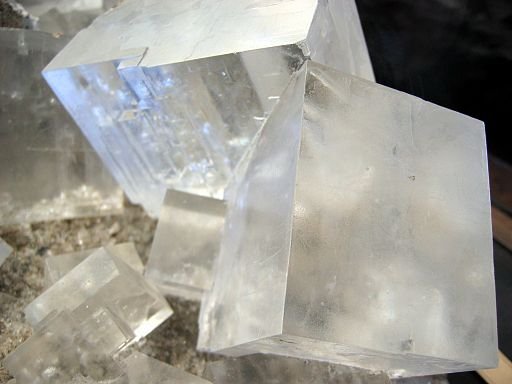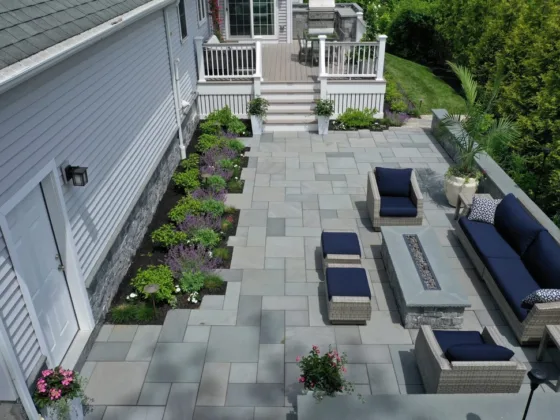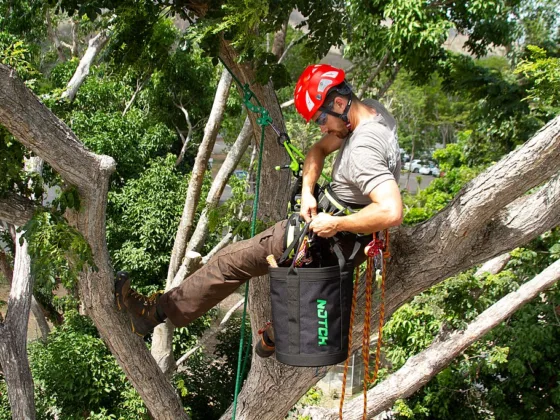Table of Contents Show
Introduction
Sidewalk salt is a shoulder, hip and law suit saver and a must have for colder regions of the country. The damage it can cause to the edge of lawns is unsightly brown, dead patchy areas that detract from the beauty of your lawn. Why does sidewalk salt kill grass in the spring? Let’s take a look at how salt affects plant growth and what can be done to limit or prevent damage to grass and landscape plants.
How Salt Destroys Vegetation
Acccording to Purdue Extension, in ancient times, salt was used as a type of biological warfare to destroy enemy crops and render their fields infertile. The sodium and chloride ions would replace the needed nutrients in the soil, dry out the roots and interfere with photosynthesis and chlorophyll production in the leaves. Without chlorophyll production, the roots are weakened further. Rock salt is especially notorious for absorbing life giving water from the soil. Chloride can inhibit grass seed germination.
Ice Melting Products
There are various types of ice melting products including rock salt or sodium chloride-the least expensive, calcium chloride, calcium magnesium acetate or CMA – the most expensive, magnesium chloride, potassium chloride and urea.
Urea is not a salt, but rather a highly concentrated pelletized nitrogen product. CMA is made with limestone and acetic acid. If used as the product recommends, calcium chloride, calcium magnesium acetate, magnesium chloride and potassium chloride will not harm your lawn. Urea in very limited quantities will help to green up your lawn but there is the potential to burn vegetation from the heat of the nitrogen.
Avoid Damage
Avoid salt damage to your lawn and landscape by erecting a short burlap or plastic fence along the sidewalk and wrapping bushes in burlap. Choose a product that has a low or no sodium chloride content for use as an icemelter. Another alternative is to install decorative paving stone two or three feet deep from the sidewalk to where the grass begins. Apply salt only to the sidewalk and not on the paving stone. Better irrigation of the areas surrounding the sidewalk will also help the spring rains to flush out unwanted salt deposits.
Treat Damage
Treat areas you anticipate will suffer damage by flushing the roots of grass with a good soaking of the garden hose. The University of Maryland recommends applying nutrasoft or pelletized gypsum to help reduce sodium levels or replacing the soil and reseeding.
Additional Concerns
Additional concerns besides sidewalk salt killing grass in the spring and damaging your plants includes damage to concrete, your car, your carpet and your pet’s feet. Safe Paw Ice Melter is a product that is pet friendly and won’t harm your plants. If you’ve been walking your dog on salt or chemically treated sidewalks, be a loving pet owner and don’t forget to wash their feet, especially between the pads, to avoid rashes and blisters that can occur.
References
- NJ.com: Salt from sidewalks, roads can damage landscapes; http://www.nj.com/homegarden/garden/index.ssf/2008/12/salt_from_sidewalks_roads_can.html
- Iowa State University Extension : Minimize Deicing Salt Damage in the Home Landscape; http://www.extension.iastate.edu/news/2009/nov/062401.htm
- Purdue extension:Salt Damage in Landscape Plants; https://www.extension.purdue.edu/extmedia/ID/ID-412-W.pdf
- Virginia Cooperative Extension: Trees and Shrubs that Tolerate Saline Soils and Salt Spray Drift; http://www.pubs.ext.vt.edu/430/430-031/430-031_pdf.pdf; http://www.pubs.ext.vt.edu/430/430-031/430-031.html












